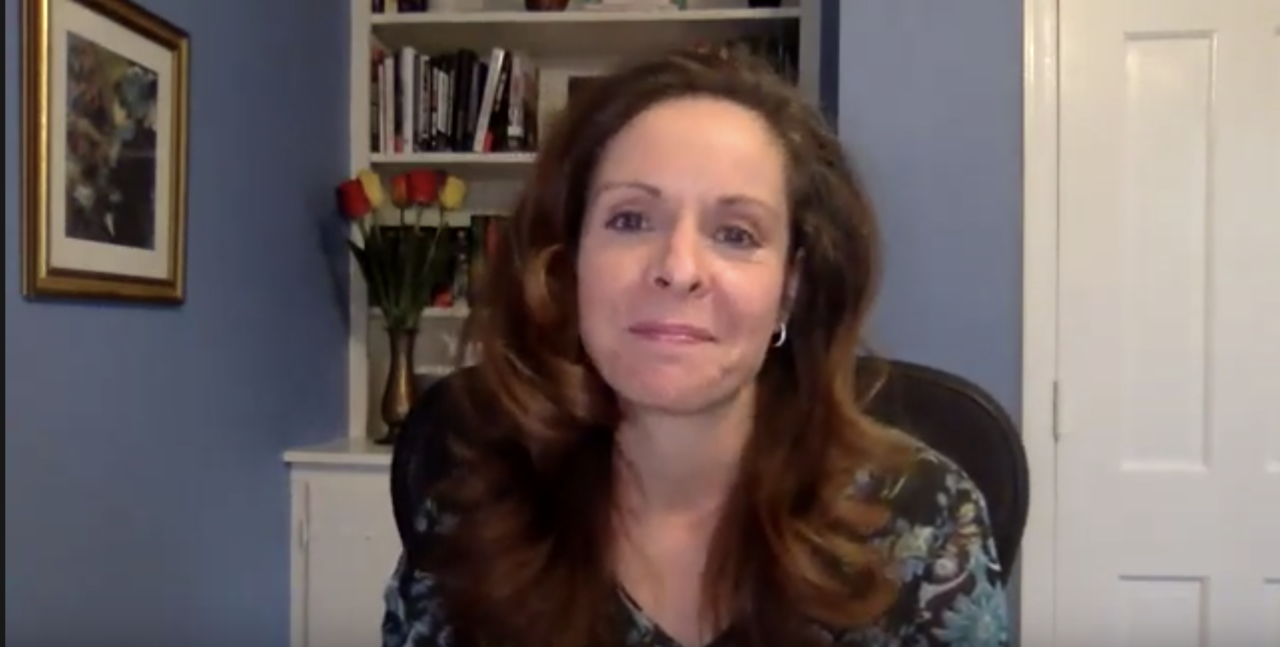In This Story
After almost a year of teaching during a global pandemic, George Mason University professors said they’ve learned some valuable lessons on what works and what doesn’t with virtual teaching, and what their students need most from them.
“Students are just more stressed than they normally would be,” said Jennifer Victor, an associate professor of political science at the Schar School of Policy and Government. “I found myself needing to be sensitive to that.”
Suzanne E. Smith, a history professor in the College of Humanities and Social Sciences, said she started off her fall classes by recognizing how difficult the year has been for her students.
“I started my classes by having them read an essay about studying history during historical times,” said Smith, who taught HNRS 240: Race and Visual Culture and a graduate seminar. Then she used icebreaker activities to help the students relax. Smith would also begin each class by playing music.
“I tried to make my Zoom space welcoming, and I used music to create a sense of fun in the class,” said Smith.
Smith found that lecturing for long periods of time on Zoom didn’t go over well, so she made sure her classes were discussion based, and sometimes even student led. She had lectures for the students that were part of their asynchronous learning and tried to vary the activities she assigned.
Grace Vaughn, an Honors College student who attended Smith’s undergraduate class, said that while she misses the normalcy of attending regular classes in-person, “Dr. Smith did one of the best jobs in creating an online class that felt like a real-life classroom.”
“Everybody usually hates icebreakers, but in this case, they really helped break down the walls between students so we could get to know each other,” said Vaughn, an environmental and sustainability studies major.
In the fall semester, Victor taught GOVT 103: Introduction to American Politics and a seminar on political elections. Victor said she uses the whiteboard feature on Blackboard Collaborate to allow students to comment anonymously.
“It’s a great way to get a whole lot of immediate engagement,” Victor said.
Victor said that while students’ educational needs were being met, students were lacking the casual connections that generally come with a college experience.
This semester, she’s experimenting with a weekly voluntary opportunity for her students to mingle on Wonder, a virtual event space. Students use avatars to navigate the room and socialize informally.
Robert J. McGrath, associate professor and director of undergraduate programs at the Schar School, said he finds it particularly challenging when students are reticent to turn on their cameras.
“It’s hard as a professor to talk to blank squares, and it is a reflection of students’ lack of morale and at the same exacerbates it,” said McGrath.
McGrath found that after he met with students in smaller groups, they were more willing to put on their cameras and engage with each other in class.
“It’s a good idea to meet early in the semester in small groups with students to talk informally,” said McGrath. “It establishes a sense of responsibility toward the professor and their fellow students, and helps them know that we are all in this together, learning together.”
The Stearns Center for Teaching and Learning also provides tips for faculty teaching online and offers webinars, training on specific topics, and an online teaching newsletter.
Faisal Mahmud, director of digital learning and co-director of the Stearns Center, suggested professors be flexible and adjust the syllabus as necessary when online teaching. In addition, Mahmud said faculty should make participation a grade separate from attendance to motivate students.
“Make it a two-way communication,” Mahmud said. “Encourage and allow students to think critically by participating in classroom discussions.”

